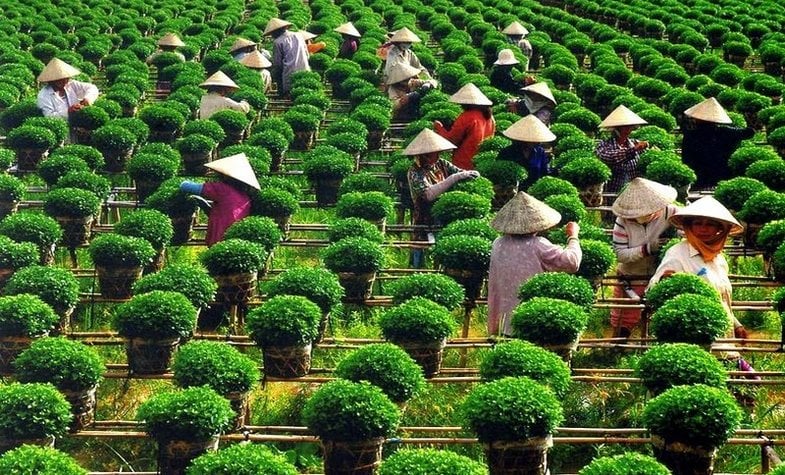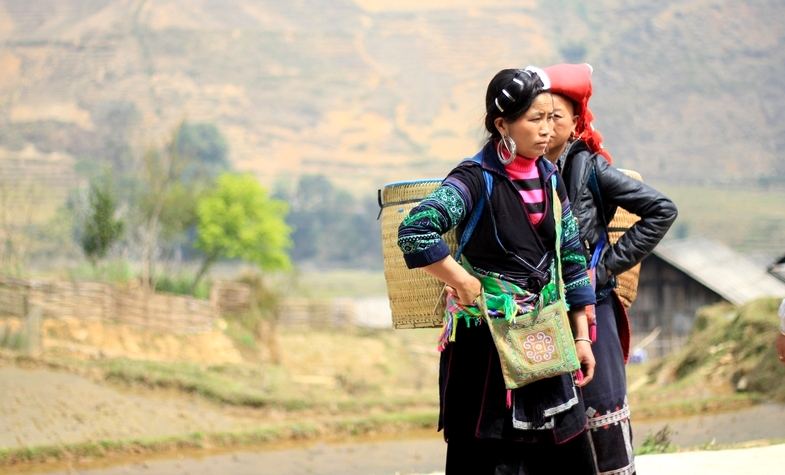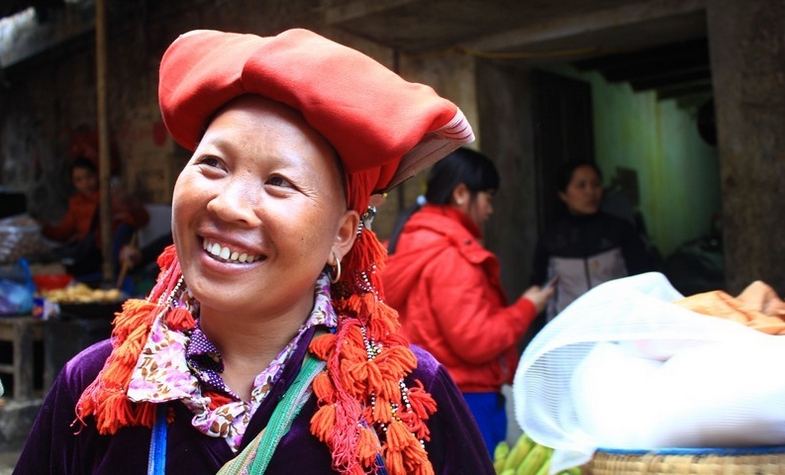Vietnamese culture is deeply rooted in both legend and history, beginning with the ancient Lac Viet people in the Red River Delta. From the myth of the Dragon Lord and Mountain Fairy to the formation of the first Vietnamese state, this heritage reflects a strong sense of identity. Today, Vietnam is home to 54 ethnic groups, whose cultural diversity contributes to a unified and enduring national spirit.
Ancient Origins of the Vietnamese People
The ancient Vietnamese, also known as the Lac Viet, are recorded in history as the first inhabitants of the Red River Delta. Archaeological findings from the Dong Son culture - famous for its bronze drums - show that they practiced wet rice cultivation early on, making them one of the pioneers of agriculture in Southeast Asia.
A well - known Vietnamese legend tells that the Vietnamese people are descendants of Lac Long Quan (a dragon king) and Au Co (a fairy). They had 100 children but eventually separated because one belonged to the water and the other to the land. Fifty children followed their mother to the mountains, while the other fifty followed their father to the sea. The eldest son became King Hùng, who founded the Van Lang Kingdom, the first known Vietnamese state, which existed from around 2769 BCE to 100 CE.

Traditional Values in Vietnamese Society
For thousands of years, Vietnamese society has been deeply influenced by Confucian philosophy, especially its Five Cardinal Relationships: ruler – subject, father – son, husband – wife, elder brother – younger brother, and friend – friend.
These values helped shape a society that highly respects the family structure, emphasizes filial piety, honors male roles, and regards education and loyalty as fundamental moral principles.
Religions, Beliefs, and Daily Culture
Vietnamese people practice a variety of religions and beliefs, including Buddhism, Taoism, Confucianism, Catholicism, and ancestor worship. However, religious practices in Vietnam are generally moderate and non - extremist.
Although there are many regional differences in accents, dialects, and customs, Vietnamese people share a common cultural foundation, reflected in similar values, behaviors, and ways of life across the country.
In many rural areas, it is still common to see three or even four generations living under one roof, reflecting strong kinship ties and deep respect for elders within the family.

Vietnam's 54 Ethnic Groups – Diversity in Unity
Vietnam today has a population of over 87 million people, of which the Kinh (or Viet) ethnic group accounts for about 86%. The remaining population belongs to 53 ethnic minority groups, who mostly reside in mountainous areas in the north, the Central Highlands, and parts of Central and Southern Vietnam.
Each ethnic group has its own language, traditional clothing, customs, and cultural practices, enriching the national identity. Despite their differences, all ethnic groups in Vietnam have remained closely connected and united throughout the country’s history of nation-building and defense.

Classification of Vietnam’s 54 Ethnic Groups by Language Families
Vietnam's 54 ethnic groups reflect a rich cultural mosaic, classified into 8 main groups according to Vietnamese languages and traditional linguistic roots:
-
Viet – Muong Group: Chut, Kinh, Muong, Tho.
-
Tay – Thai Group: Bo Y, Giay, Lao, Lu, Nung, San Chay, Tay, Thai.
-
Mon – Khmer Group: Ba Na, Brau, Bru-Van Kieu, Cho Ro, Co, Co Ho, Co Tu, Gie Trieng, Hre, Khang, Khmer, Kho Mu, Ma, Mang, M'nong, O Du, Ro Mam, Ta Oi, Xinh Mun, Xo Dang, Xtieng.
-
Hmong – Dao Group: Dao, Mong, Pa Then.
-
Kadai Group: Co Lao, La Chi, La Ha, Pu Peo.
-
Austronesian Group: Cham, Chu Ru, Ede, Gia Rai, Raglai.
-
Han Group: Hoa, Ngai, San Diu.
-
Tibeto-Burman Group: Cong, Ha Nhi, La Hu, Lo Lo, Phu La, Si La.
Video: Emojis about 54 ethnic minority groups in Việt Nam:
Source: Vietnam News outube Channel
Ethnic Unity Throughout Vietnam’s History
Over thousands of years of development, all ethnic groups in Vietnam have stood side by side, contributing to the defense of national sovereignty, independence, and cultural preservation.
Each group - whether large or small - has its own language, traditional attire, festivals, and customs, painting a colorful picture of Vietnam’s multicultural society. This harmonious blend of cultural identities forms a unified yet diverse national character, rich in solidarity, resilience, and independence.
From the legend of the Dragon and Fairy to the modern-day coexistence of 54 ethnic communities, the Vietnamese people stand as a testament to a nation rooted in tradition, enriched by diversity, and united by a shared destiny of harmony and sustainable development.
***
Travel Authentic Asia Company is your best choice for discovering the beauty of Southeast Asia. Our experienced and knowledgeable travel advisors are committed to helping you create a tailor-made tour and extraordinary experiences in this majestic region.
If you're looking for an authentic cultural experience, do not hesitate to contact Travel Authentic Asia to choose a Vietnam tour, Southeast Asia tour package or to customize your own style tour to South East Asia.

